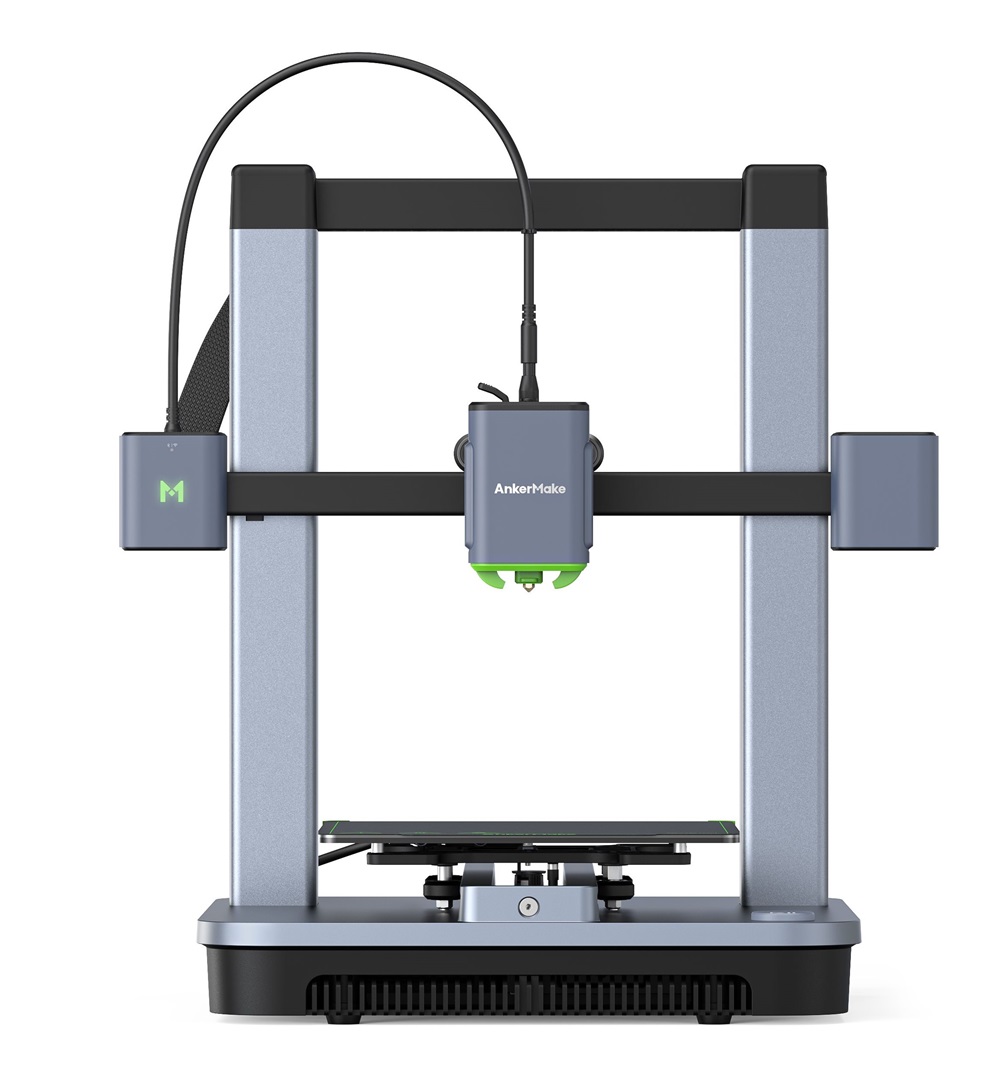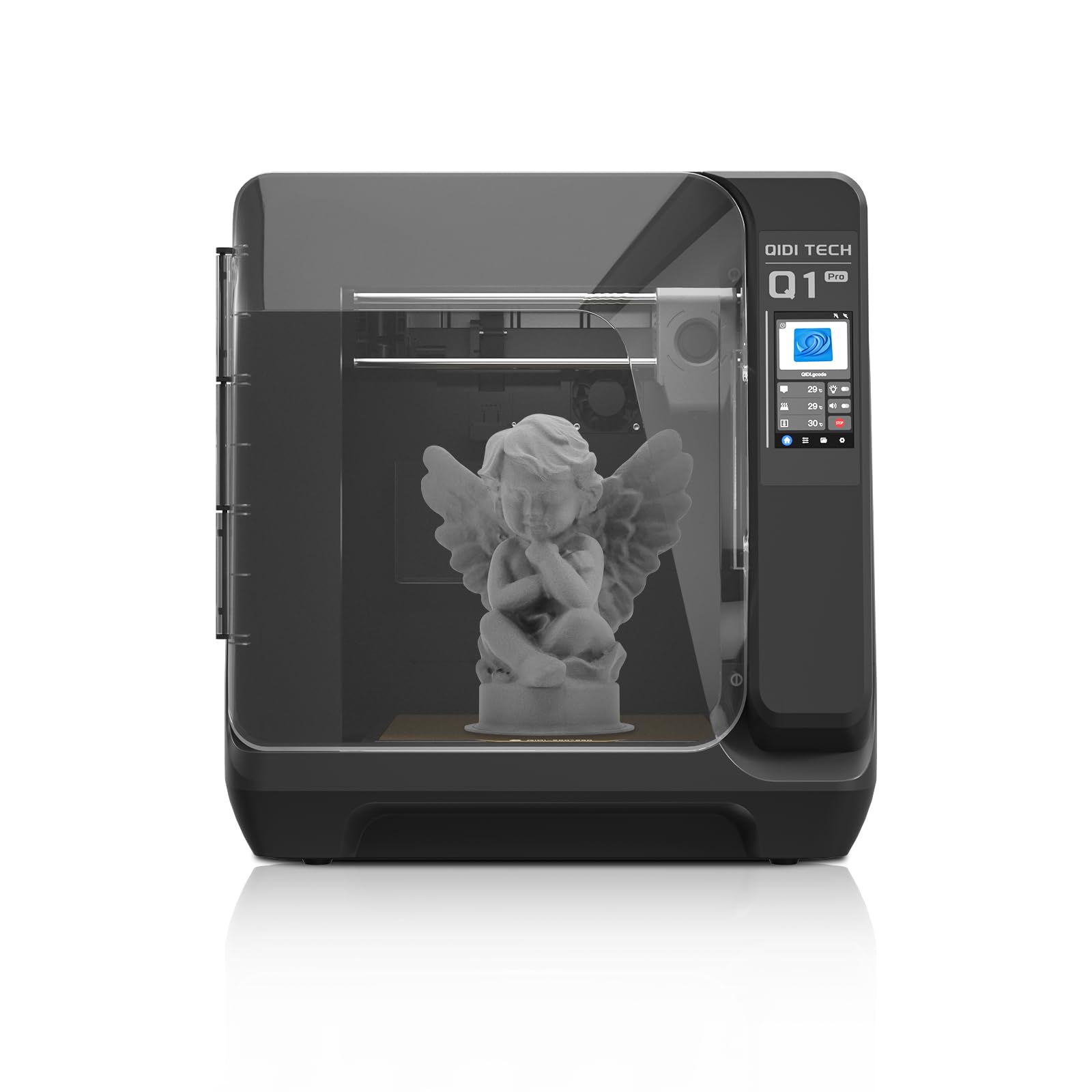Compare M5C vs Q1 PRO
Comparison between the best 3D printers
Choose the best 3D printer at the best price. The cheapest 3D printers are here.
Buy a 3D printer here with 3D Fila.
 |
 |
|
| Model | M5C[BUY M5C] |
Q1 PRO[BUY Q1 PRO] |
| Printing Material | Filament | Filament |
| Buy Filament for AnkerMake M5C | Buy Filament forQIDI Q1 PRO | |
| Estimated price | $399,00 | $449,00 |
| Manufacturer | AnkerMake | QIDI |
| Release Year | 2023 | 2024 |
| Print Volume [mm] | 220x220x250 | 245x245x245 |
| Printer Size [mm] | 466x374x480 | 467x477x489 |
| Weight [kg] | 9,6 | 20 |
| Power Loss Recovery | YES | YES |
| Enclosed printer | NO | YES |
| Bed Leveling | Automatic | Automatic |
| Filament End Sensor | YES | YES |
| Bed type | Heated | Heated |
| Power supply system | Direct Drive | Direct Drive |
| Standard nozzle | 0,4 | 0,4 |
| Maximum Nozzle Temperature [°C] | 300 | 350 |
| Maximum Bed Temperature [°C] | 100 | 120 |
| Maximum printing speed [mm/s] | 500 | 600 |
| Filament holder | YES | YES |
| Camera for supervision | NO | NO |
| Recommended filaments | PLA, PETG, TPU, ABS, PA, PLA-CF, PETG-CF, PA-CF | PLA、ABS、ASA、PETG、TPU、PC、PA、PA-CF、PET-CF、PAHT-CF etc. |
| Recommended slicers | AnkerMake Studio (macOS, Windows), Simplify3D, Ultimaker Cura, PrusaSlicer | QIDI Slicer/Cura/Simplify 3D/ORCA/PRUSA Slicer |
| Maximum Resolution [mm] | 0,1 | 0,1 |
| Processor | Cortex-A53,64-bit Processor | |
| Display | Touchscreen 4,3'' | |
| Power Supply | 350 W | 350 W |
| Connectivity | Wi-Fi, USB-C, Bluetooth | WiFi/USB Flash Drive/Ethernet Cable |
| Operating systems | Windows, Linux e Macbook | Windows, Linux, Macbook |
| Date of registration in the system | 2024-09-11 | 2024-07-09 |
| Release date | 2023 | 2024 |
| Extra features | The AnkerMake M5 printer stands out for its impressive print speed, reaching up to 500mm/s. It features AI print monitoring, an integrated camera for creating timelapses, auto-leveling bed with pressure sensor, direct extruder, flexible PEI-coated build plate, and Wi-Fi and USB-C connectivity. Assembly is quick and easy, and the printer is designed to deliver high print quality and ease of use. | The QIDI Q1 Pro 3D printer stands out for its Core XY structure and heating chambers that reach up to 60ºC, ideal for advanced materials such as ABS and Nylon. It features Klipper firmware, an automatic leveling system, a high-flow extruder with a double metal nozzle and a hotend that reaches 350ºC. It offers connectivity via Wi-Fi, USB and Ethernet, as well as a 1080p camera for remote monitoring and an intuitive touchscreen for easy operation. |
| Support for multiple colors and materials (AMS and CFS) | NO | NO |
Notes * |
||
| Cost-benefit | 7 / 10 | 8 / 10 |
| Hardware | 2.8 / 10 | 4.8 / 10 |
| Tela | . | . |
| Print volume | 3 / 10 | 3 / 10 |
| Performance | 4 / 10 | 5 / 10 |
| [BUY M5C] | [BUY Q1 PRO] |
Conclusion |
| In conclusion, both the AnkerMake M5C and QIDI Q1 Pro 3D printers offer impressive features tailored to specific user needs, yet they cater to slightly different audiences within the 3D printing market. The AnkerMake M5C stands out for its exceptional print speed and ease of use. Its lighter weight and compact design make it an appealing choice for hobbyists or those with limited space who prioritize quick and quality prints. Key features such as AI print monitoring and an intuitive touchscreen enhance the user experience, making it a very user-friendly option. However, it lacks an enclosed design, which may limit its ability to handle specific materials that require stable temperature environments. On the other hand, the QIDI Q1 Pro brings advanced capabilities suitable for more experienced users or those looking to work with a wider range of materials like ABS and Nylon. Its enclosed structure and improved temperature capabilities provide better control over the printing environment, which can be critical for high-quality outputs. The QIDI printer also features dual metal nozzles and offers various connectivity options, making it versatile and efficient for more demanding projects. Ultimately, the choice between the two 3D printers should depend on the intended use and material requirements. For those seeking speed and simplicity, the M5C is an excellent choice, while the QIDI Q1 Pro is better suited for users focusing on diverse material applications and durability in prints. Both printers deliver solid value for their price points, making them competitive options in the market. |

